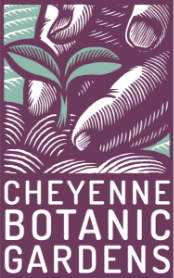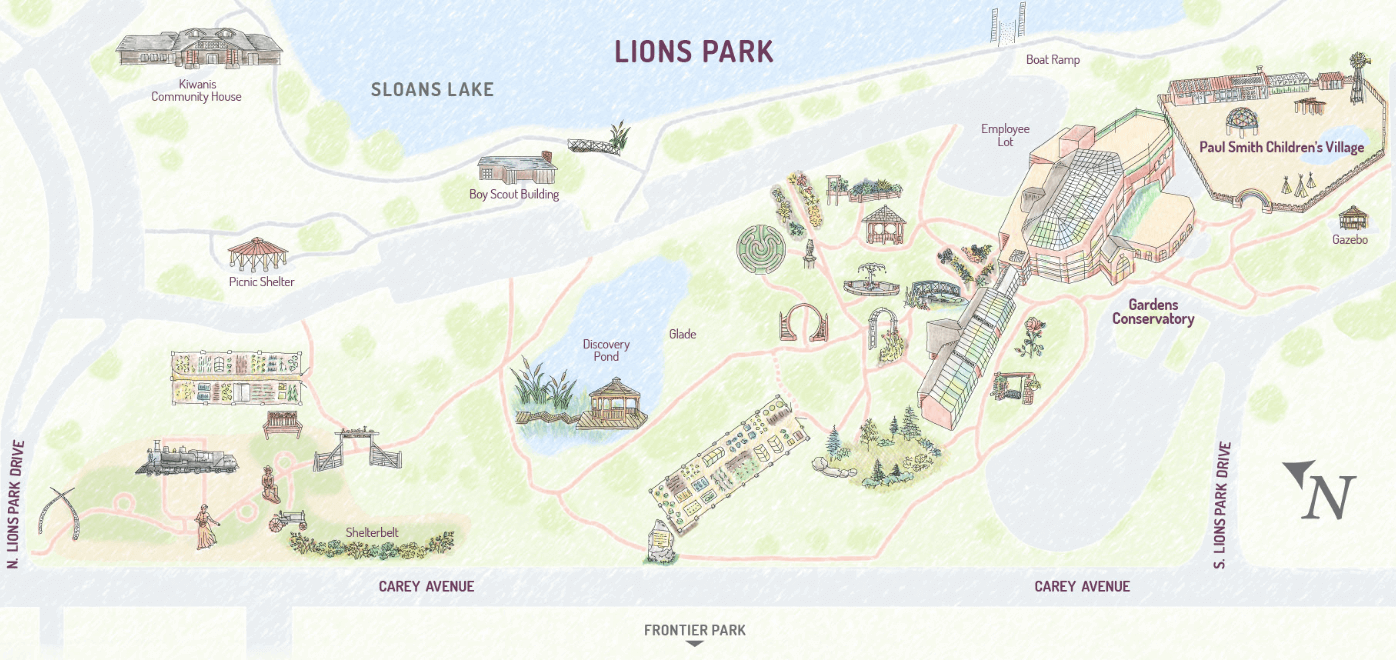Plants made for the shade – By Shane Smith, Steve Scott, Sue Whetten
It is always nice to have a yard that has matured with tall trees that provide a cool canopy of leaves overhead. They protect you and your yard from the hot summer sun. You have also gained some protection from the wind and elements while enhancing your yard. There is one drawback to all that shade, you are then limited to what you can grow in shady spots. Sun-loving annuals, perennials and most vegetables no longer thrive as the shade encroaches upon your yard. Even if your yard has yet to have tall trees you always have a few spots where the sun doesn’t reach. Shade can be found on the north side of a fence or a wall, or between you and your neighbor’s house.
What to do? It’s time to find some plants that can do well in the shade.
Annuals for the shade
One of the most touted shade loving plants is impatiens. While impatiens are indeed shade loving, they are slow to establish in Cheyenne mostly because they abhor wind and cool nights. They do best in protected locations and even then don’t start looking full until late July or early August.
A favorite of mine that does well in light shade is the pansy. While they are often treated as an perennial they are best treated as an annual, planted every year. Snapdragons can also tolerate light shade. Begonias always can tolerate shade well in Cheyenne. Other less common annuals for shady spots include: browallia, coleus, mimulus, forget-me-nots, and violas. With good wind protection and taking care to wait until cool nights are over, you can have some luck growing impatiens, caladiums and calla lilies.
Perennials for the shade
There are some excellent choices for shade loving perennials. One of our favorites is Bleeding heart, which has fascinating flowers that live up to their name but only bloom for a few weeks. Delphiniums with their tall blue spikes can tolerate partial shade although too much might result in legginess and mildew. The echinacea (cone flower) can also tolerate some partial shading and has a beautiful pink, daisy-like flower in late summer. Columbine grows well in shade but blooms best if it gets a little sun during the day. In many catalogs and books echinacea is listed for a sunny spot but it also does well in light shade of the high altitude garden where the sun is more intense. The lily-of-valley with its tiny fragrant bloom even grows under evergreen trees. Vinca minor, also called “periwinkle” is an ideal ground cover under trees although it can be hard to establish. Vinca grows in a covers the ground with glossy green leaves with a blue flower appearing in spring. Less common shade-loving perennials include:
- primroses (great spring flowers)
- mertensia (blue bell type flowers)
- monarda (prefers half-shade and you must grow mildew resistant varieties)
- stachys or lamb ears (needs partial sun)
- thalictrum or meadow rue with powder puff like flowers
- campanulas with bell-shaped flowers
- pulmonaria or lungwort which is slug resistant spring blooms and variegated foliage
- polygonatum or Solomon seal with dainty bell shaped flowers
- Bergenia a plant with large, leathery leaves and, bell-shaped spring flowers produced in clusters
- Tiarella also known as Foamflower and False Miterwort very hardy with some interesting foliage and long lasting flowers.
- Polemonium or Jacob’s ladder with fern like foliage and blue, white and pink flowers
- Aconitum or monkshood a native wildflower with a very unique hooded shaped flower
- Phlox stolonifera a low growing and spreading plant with purple to violet flowers
- Tricyrtis or Toad lily has showy foliage with showy, welcome late summer flowers
- Asarum canadense or Wild Ginger with heart shaped leaves and purple-brown cup shaped flowers
When you are purchasing flowering plants for a shady place try buying the varieties with lighter colored flowers because they will show up better in the shade.
In especially dark, shady places it is particularly hard to get plants to bloom. This might be a good place for perennials with interesting foliage. I have had good luck growing hostas, also known as the “plantain lily.” It has attractive wide leaves and can be found with stripes, green and bluish foliage. However, hostas can start to look a bit ragged by the end of the summer if not well cared for.
Plants for dry shady areas
Sweet Woodruff (Galium odoratum) with a ground cover growth habit has the scent of a new mown hay. Creeping grapeholly (Mahonia repens) is somewhat woody but great in the back of a flower garden and holds its leaves into the winter. Hermann’s Pride a.k.a. ‘Dead Nettle’ (Lamium galeobdolon) has interesting variegated foliage and some fascinating small pink and white blooms. Don’t leave out the many new choices of Coral Bells (Heuchera) which gets a dainty scarlet spike of flowers and continues to bloom all summer. Coral Bells comes in many species some of which besides a green leaved variety also have reddish, bronze or plum leaves and the newer varieties have an interesting variegation along the veins. Coral bells also have red, pink and white flowers borne on small spikes.
Ferns for shade
Ferns are also a great way to deal with the shade. It almost looks out of place to see a fern growing on the high plains, but will grow fine here if you grow the right types. They love the north side of buildings, mulched beds and regular water but don’t have to be soaked as some might think. The ostrich fern is a good choice for Cheyenne. The “Colorado male” fern is also extremely hardy. Both types can grow up to two feet high and can even spread. I received my ferns from a neighbor who was being inundated with them spreading under her junipers. Ferns add an interesting texture that can make a corner of your yard look lush and almost sub-tropical. They prefer rich soil and a fair amount of moisture.
Even a few vegetables can tolerate some shade
Most vegetables are best grown in sunny spots. However, you can get some limited production of salad greens in semi-shady spots. Spinach, lettuce and chard are your best bets. Try planting a little closer together than usual.
Shady places are often viewed as “difficult places” but in our sunny climate, shade is a valued and often restful place. It’s also a great place to put a few chairs or hang a hammock and relax. With a little planning we can make our shady nooks the most interesting parts of the garden.
Click the link below for a sampling of some shade loving perennial plants found at the Cheyenne Botanic Gardens woodland shade garden
Foliage for the Shade By Sue Whetten horticulturist and landscape designer. Former staff horticulturist at the Cheyenne Botanic Gardens in Cheyenne, Wyoming.
When picking plants for shady areas I look for more than a tolerance to the shade. I also want plants that will lighten the darkness. Perennials with white or silver leaves become little beacons of soft light. Foliage that is a color other than green also adds interest to the space. The flowers, which only bloom for part of the season, are an added bonus rather than my main focus in choosing plants.
Mrs. Moon Bethlehem Sage (Lungwort)
NAME: Pulmonaria saccharata ‘Mrs. Moon’ USDA HARDINESS ZONES: 3 to 7
SIZE: 12 inches tall and 24 inches wide CONDITIONS: Partial or full shade in dry to moist soil
This plant looks like someone splattered silver paint onto the leaves from a wet brush. Each leaf is a long lance full of prickly hairs with a few leaves flipped over to show pale green undersides. As the plant expands, multiple centers overlap each other in a lazy pattern of swirls. In the spring, clusters of silky pink flowers fade to a soft blue that complements the bluish undertones of the foliage.
Herman’s Pride False Dead Nettle, Yellow Archangel
NAME: Lamiastrum galeobdoion ‘Herman’s Pride (also sold as Lamium galeobdoion)
USDA HARDINESS ZONES: 3 to 9
SIZE: 10 inches to 12 inches tall and 24 inches wide
CONDITIONS: Part sun to shade in any soil type.
Small leaves on a short plant, yet the best word to describe it is bold There is such a high contrast between the silver body of the leaves and the green veins and margins, that it stands out even in a mixed bed full of bright flowers. When it blooms in late spring, the pure yellow of the small flowers make it even more eye-catching. While some have trouble keeping it under control, in our harsh climate, it only looks bold, but behaves meekly.
Marmalade Coral Bell
NAME: Heuchera ‘Marmalade’
USDA HARDINESS ZONES: 4 to 9
SIZE: 12 inches to 18 inches tall and wide CONDITIONS: Partial shade in any regular to moist soil.
Picture an open jar of marmalade on your table. The color is pale orange, but also includes shades of honey, amber, even sienna. Those are the colors found on these maple shaped leaves, plus a pale green. Some of the leaves are bathed in a single color. Others, on the same plant, are a jumble of all of the colors. The summertime flower spikes are reddish brown, which may not sound pretty, but work well with the foliage and give cut-flower arrangements a contemporary look
Jack Frost Brunnera
NAME: Brunnera macrophylla ‘Jack Frost’
USDA HARDINESS ZONES: 3 to 7
SIZE: 12 inches to 15 inches tall and 24 inches wide
CONDITIONS: Morning sun only to shade in moist soil
Heart shaped leaves, many of which are larger than my hand, look lightly dusted with an even coat of silver. Beautiful bluish-green veins and leaf margins shows through the silver. In the spring it has blue forget-me-not flowers. I use this plant as an accent with just a few spaced among sweeps of other plants.
Elegans Hosta (Plantain lily)
Name: Hosta sieboldiana ‘Elegans’
USDA HARDINESS ZONES: 3 to 8
SIZE: 18 inches to 30 inches tall and 36 inches wide
Conditions: Partial shade to shade
One of the largest hostas, this one has deep smoky blue foliage with a slight hint of frost. The heart shaped leaves have deeply defined veins. They remind me of hand-held paddle fans. White flower rise above the leaves on long stems. Some gardeners remove the flowers to keep the focus on the leaves. Slugs love hostas, but this one usually is left untouched.




